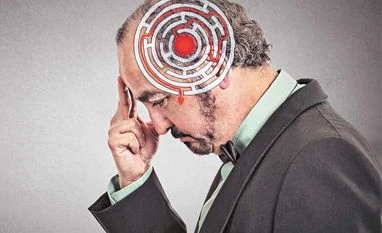Scientists have identified a common pattern of brain activity behind bad mood, an advance that could help develop new therapies for depression and anxiety.
Most human brain research on mood disorders has relied on studies in which participants lie in an fMRI scanner and look at upsetting images or listen to sad stories.
These studies have helped scientists identify brain areas associated with emotion in healthy and depressed individuals, but they do not reveal much about the natural mood fluctuations that people experience over the course of a day or provide insight into the actual mechanisms of brain activity underlying mood.
Researchers from University of California, San Francisco in the US identified a common pattern of brain activity that may be behind those feelings of low mood, particularly in people who have a tendency towards anxiety.
For the study published in the journal Cell, researchers continuously recorded brain activity for a week or more in human volunteers and linked their day-to-day mood swings to specific patterns of brain activity.
The researchers recruited 21 patient volunteers with epilepsy who had had 40 to 70 electrodes implanted on the brain's surface and in deeper structures of the brain as part of standard preparation for surgery to remove seizure-causing brain tissue.
They recorded a wide range of brain activity in these patients over the course of seven to 10 days, particularly focusing on certain deep brain structures that have been previously implicated in mood regulation.
Also Read
Meanwhile, the patients regularly logged their mood throughout the day with tablet-based software.
The researchers then used computational algorithms to match patterns of brain activity to changes in the patients' reported mood.
"We were quite surprised to identify a single signal that almost completely accounted for bouts of depressed mood in such a large set of people," said Vikaas Sohal, from UC San Francisco.
"Finding such a powerfully informative biomarker was more than what we'd expected at this stage of the project," Sohal said.
)